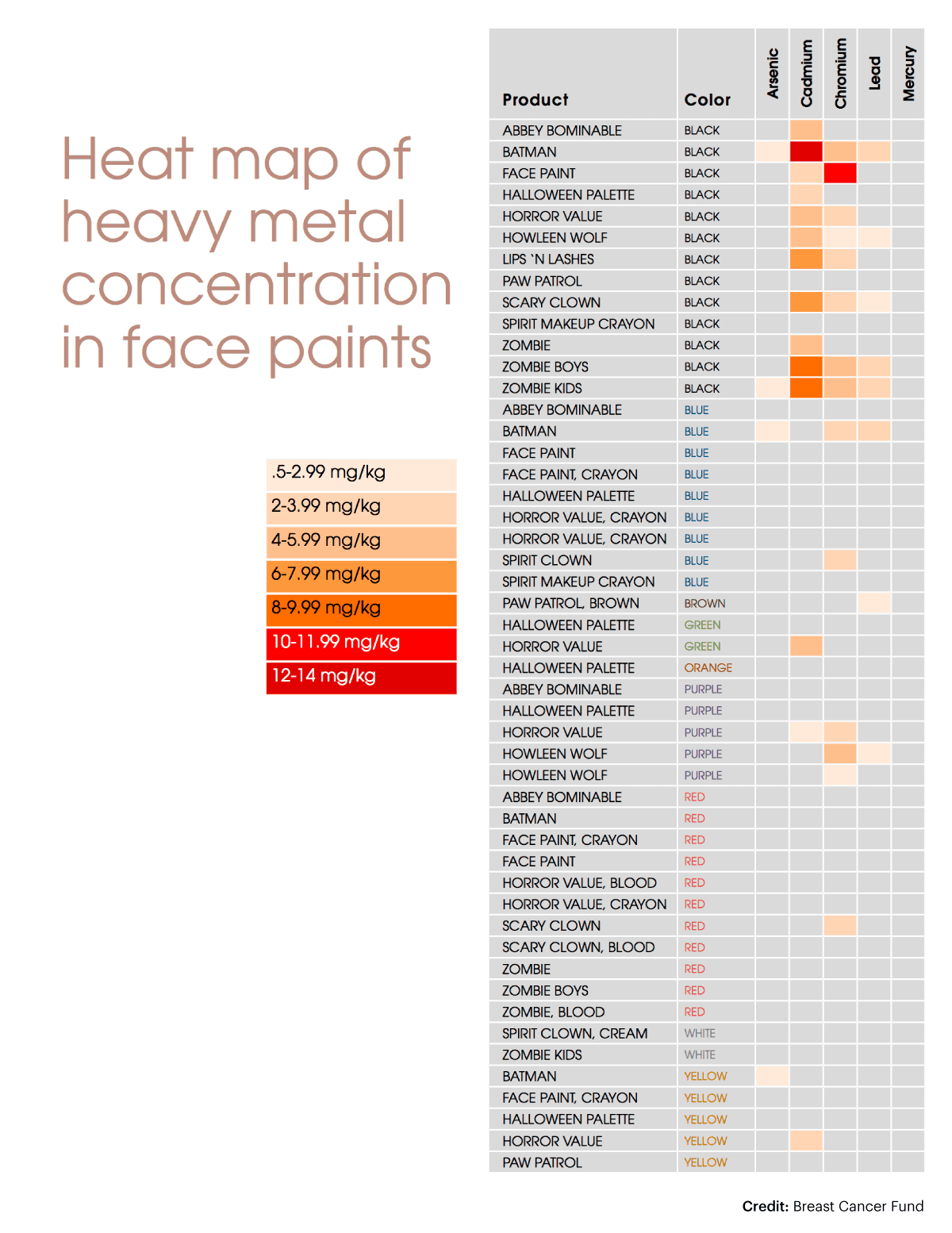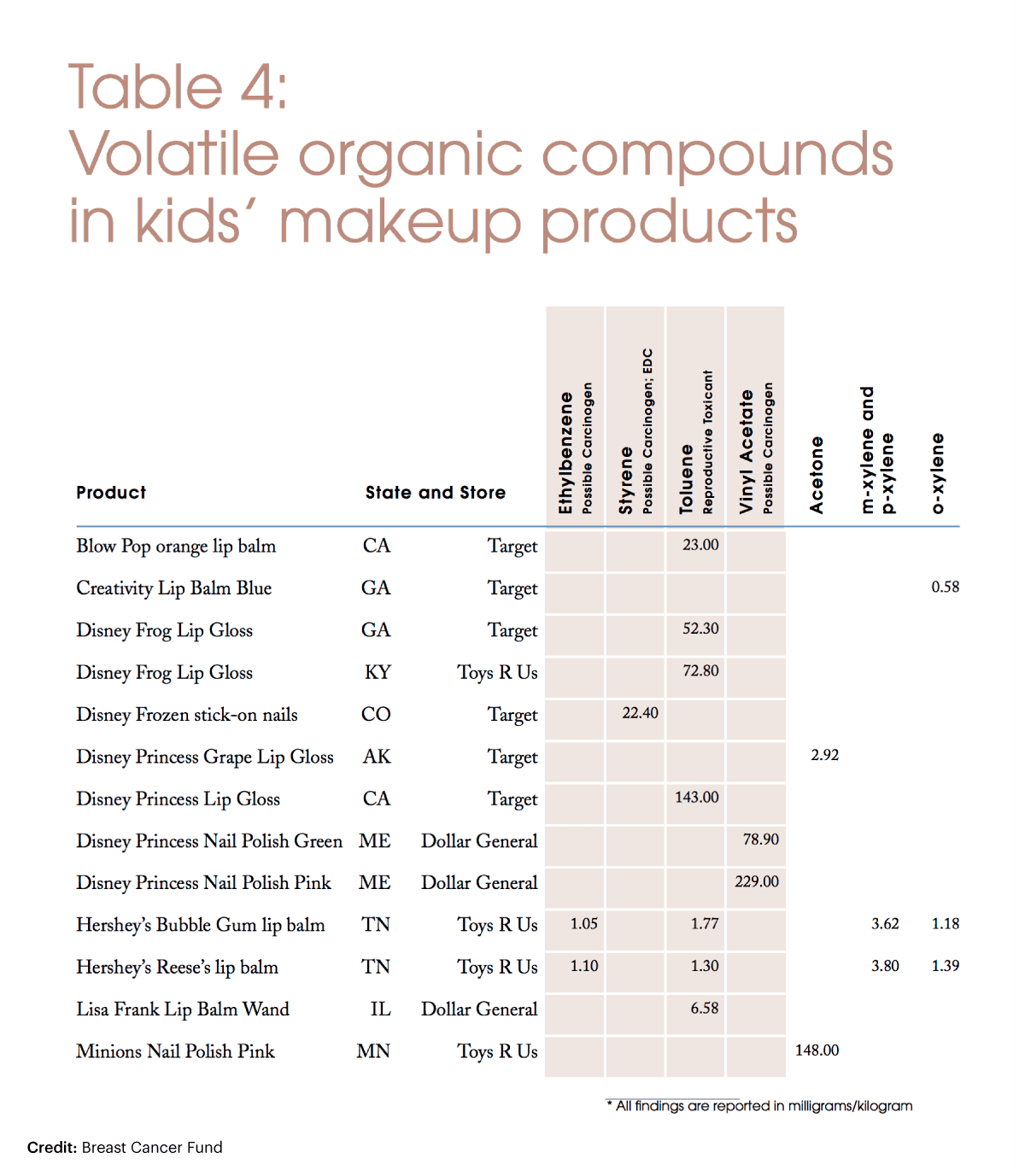Dangerous Kids’ Makeup, Including the 11 Scariest Ingredients

Pretty Scary 2: Unmasking toxic chemicals in kids’ makeup is a must-read for any parent. If you have a daughter, it’s especially important. Here’s why: We now know breast cancer in adulthood is linked to exposure to toxic ingredients at a younger age. You might be thinking, “Oh, come on, Dr. Axe, a little bit of face paint a couple of times a year won’t hurt anyone.” But what if I told you that children’s cosmetic products commonly contain heavy metals like lead, carcinogens and endocrine disruptors. The dangers of these ingredients are concerning for adult health, but for a child’s developing system, the concern is even greater. According to the U.S. Centers for Disease Control and Prevention, lead, for example affects “virtually every system in the body.” But it’s especially harmful to the developing brain and nervous system of fetuses and young children. (1)
Children using makeup is a lot more common than it was decades ago. Nowadays, the cosmetic industry actually targets kids and often uses popular characters and movies to get children interested in makeup and other beauty products at a very early age. It’s time take a look at the worst ingredients currently detected in Halloween makeup and other kids’ cosmetics. Because you don’t want your choices today to be haunting you or your child tomorrow.
Outdated Cosmetics Safety Law — A Broken System
So how did we get here? You might think that the Food and Drug Administration must be trying to protect children from harmful toxins as we speak. But as the report points out, the cosmetic safety law currently on the books is more than 75 years old. Talk about outdated. Plus, this law doesn’t barely gives the FDA any power to make sure that young consumers (as well as adults) are kept safe.At present, the cosmetics being produced by the billion dollar cosmetics industry are actually one of the least regulated groups of products. There are only two pages in the The Federal Food, Drug and Cosmetics Act (FFDCA) covering cosmetics safety, while the food and drug industry gets 112 pages. (2)
As the law stands today, cosmetic companies can get away with so much more than you’d probably believe. I’m talking about using raw materials that have known serious adverse and long-term health effects like cancer and birth defects. Ideally, at the least, every ingredient going into cosmetics should be tested for long-term impact on human health before going to market, but that’s not a requirement right now. The FDA also relies on voluntary reporting when it comes to ingredients and injuries, which means the FDA — by law — cannot require manufacturers to register its cosmetic establishments, file data on ingredients or report cosmetic related injuries.
For companies selling their dangerous kids makeup and other cosmetic products online, current law gives them even more leeway and it doesn’t even require them to include ingredients on their labels. Can it get scarier this time of year? Yes, unfortunately. The FDA can’t even recall a dangerous cosmetic product harming consumers without an in-depth court case. Not even when it’s a cosmetic hurting an innocent child? No. It’s so disturbing, I know.
Dangerous Kids’ Makeup: The Worst Ingredients
Back in 2009, the Campaign for Safe Cosmetics released their first Pretty Scary report on10 Halloween face paint kits. The result? Every single product tested positive for lead. The newest report, Pretty Scary 2, is based on label reading and laboratory tests of face paint commonly used during special occasions like Halloween. It also includes body sprays, lip balms, hair products and nail products. Where do these products come from? Sources include chains like Claire’s, Dollar General, Dollar Tree, Family Dollar, Justice, Target, and Toys “R” Us.
Sneak peak at the report: 48 different Halloween face paints underwent testing for the presence of heavy metals like lead, cadmium, arsenic and mercury. Almost half of the face paints contained trace amounts of at least one toxic heavy metal. Some of the products contained an alarming four heavy metals.
Exposure to toxic ingredients is highly concerning to a child’s development, but exposure has also been shown cancer risk decades down the line during adulthood, too. For example, studies involving the pesticide DDT showthat early life exposures to DDT can increase breast cancer risk later in life. One study specifically found that girls who were younger when DDT use was the highest had an increased risk of breast cancer. (3) I think the takeaway here is that what goes into our children’s systems today can affect them for many years to come and maybe even in devastating ways.
Here are just some of the most toxic ingredients that can be found in Halloween makeup and other kids cosmetic products, according to the Pretty Scary 2 report: (4)
Arsenic
- 4 of the 48 face paints tested positive for arsenic, with levels ranging from 1.1 to 1.9 ppm.
- Often considered a tap water toxicity issue, this heavy metal is a dangerous kids’ makeup ingredient, too. According to the CDC, inorganic arsenic and arsenic compounds are considered to be cancer-causing chemicals. In addition, unusually large doses of inorganic arsenic can cause nausea, vomiting, diarrhea, dehydration and shock. (5)

- Nearly 20 percent of the Halloween face paints contained the heavy metal lead.
- There is no safe level of level.
- Lead exposure increases the risk for damage to the brain and nervous system, slowed growth and development, learning and behavior problems (including reduced IQ, ADHD symptoms, juvenile delinquency, and criminal behavior) as well as speech and hearing issues. (6)
- Heavy metals (like lead) tend to be found more commonly and in higher levels in darkly pigmented face paints.
- Almost 30 percent of the Halloween face paints tested positive for cadmium.
- At the very least, cadmium exposure is linked to kidney and lung damage. (7)
- According to a scientific research, children with higher cadmium levels are more likely to have learning disabilities and participate in special education. Researchers also noted that these associations were at exposure levels previously considered to be without adverse effects; these levels are now common among children in the United States. (8)
- Chromium was detected in 27 percent of the Halloween face paints tested.
- It’s used as a colorant and can be toxic to non-reproductive organ systems. (9)
- According to the EPA, human studies have clearly established that inhaled chromium is a human carcinogen, leading to an increased risk of lung cancer. (10)
- At least one paraben was found in 34 percent of products.
- Two or three parabens were present in 3 percent of products.
- Parabens are known endocrine disruptors. According to the National Institutes of Health, these chemicals can negatively affect the body’s hormonal system and produce adverse developmental, reproductive, neurological and immune effects in the human body. (11)
- Parabens are also estrogen mimickers that can increase the expression of many genes that have been shown to cause human breast tumor cells to grow and proliferate in vitro. (12)
- Formaldehyde-releasing preservatives were found in 3 percent of the products.
- Formaldehyde is a known human carcinogen. It’s a substance directly capable of causing cancer in living tissue. (13)
- The main formaldehyde-releasing compounds found include DMDM hydantoin, imidiazoldinal urea and diazolydinal.
- Twenty percent of products tested contained VOCs.
- Flavored lip balms were most likely to contain VOCs.
- Toluene, a VOC, turned up in about 11 percent of makeup tested.
- Other highly concerning VOCs found include styrene (a probable carcinogen and endocrine disruptor), ethylbenzene (a possible carcinogen) and vinyl acetate (a possible carcinogen).

- 28 percent of products tested contained ethoxylated ingredients based on label reading alone.
- Ethoxylation is a process used extensively in the skin care industry.
- This manufacturing process can result in two toxic contaminants linked to breast
cancer and other cancers: ethylene oxide and 1,4- dioxane.
- Used in 18 percent of producted tested, this mineral is used in cosmetics as an absorbent and to smooth and soften products.
- It may be contaminated with asbestos and has been classified as carcinogenic by the International Agency for Research on Cancer. (14)
- Inhalation is of serious concern, too. It’s linked to respiratory distress, mesothelioma and inflammation. Talc is also linked to ovarian cancer and endometrial cancer.
- Half (half!) of products Breast Cancer Fund tested contained frangrance.
- Thousands of chemicals can fall under the ingredient name “fragrance.”
- “Fragrance” ingredients could include things that won’t appear on the label, like suspected or known carcinogens acetaldehyde, benzophenone, dichloromethane, styrene and titanium dioxide.
- “Fragrance” is also a catchall term that could coverup the use of chemicals like benzyl salicylate, diethyl phthalate, and propyl paraben, known endocrine disruptors.
- Others are “fragrance” ingredients incllude allergens, skin irritants, and ingredients toxic to the liver, lungs, and kidneys, among other organs.
- Thirteen percent of products tested contained silica.
- Silica may be used as an absorbent, nonsurfactant, and thickener in personal care products.
- It may be toxic to the liver, respiratory system, and kidneys.
Final Thoughts on Dangerous Kids’ Makeup Ingredients
After reading this report, I highly recommend steering clear of dangerous kids’ makeup like Halloween face paints this time of year (and in general). Unless you know for sure that a face paint or other product coming in direct contact with your child is safe and free of health hazardous ingredients, avoid it completely. Be a label reader across the board when it comes to your kids. Take a look at what is already in your home and make better, more informed choices moving forward.Breast Cancer Fund also recommends:
- Finding or creating a costume that doesn’t require face paints or makeup use.
- Trying a DIY recipe for face paints or enhancing outfit with ears, caps or customized mittens or socks.
- Buying safer products. (Reading product ingredient labels and avoid items with fragrance and other red list ingredients.)
- Avoid use of darkly pigmented makeups.
- Use smartphone apps such as Think Dirty, Healthy Living and Good Guide to check the safety of products.
- Letting your kid be a kid a little longer, and delaying their introduction to makeup, especially color cosmetics, hair dye, nail polish and lipstick.
- Supporting health-protective federally mandated cosmetic safety legislation.
Another great resource? Check out Environmental Working Group’s Skin Deep Cosmetics Database to rate personal care products (and find safer ones).
No comments:
Post a Comment